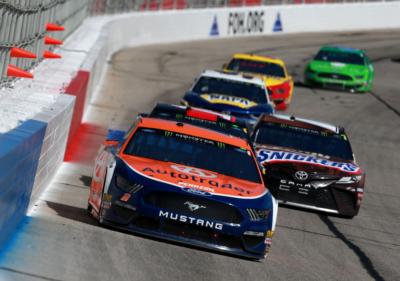There were many questions heading into this Monster Energy NASCAR Cup Series Folds of Honor QuikTrip 500 race weekend. The majority of those centered around the first look at part of NASCAR's new handling/horsepower package for the Cup cars. The predictions varied about some idiosyncrasies with drafting, but by Sunday morning, there seemed to be a common
The restarts were bananas. Qualifying and practice made the Team Penske cars look like garbage, but they shot out of a cannon on the restarts on race day. Eventual race winner Brad Keselowski, Ryan Blaney, and Joey Logano all seemed to ascend into the top 10 or 15 in the blink of an eye. Kevin Harvick, the defending race winner, also took very little time climbing from his 18th starting spot to the top 10. These drivers were among those that really made hay when the field was bunched up. A crew chief told me this morning these cars in this package take a lap or two to get wound up, similar to a restrictor plate.
But once the cars get settled in their positions, the running order did not change dramatically. The second place car seemed to have a better shot at catching the leader than did other cars behind them in traffic. Some drivers seemed to work the draft, even with lapped vehicles, to get that desperately needed push to add to their momentum. But making up lost spots over the course of a run was incredibly difficult.
Kyle Larson led a race-high 142
The tire
Dirty air played a big factor in Martin Truex Jr.'s not being able to catch Keselowski in the closing laps. Truex Jr. fumed over Ricky Stenhouse Jr.'s lapped car holding the bottom lane and dirtying the 19 car's air. This kept Truex Jr. at bay long enough for Keselowski to win. Keselowski said after the race that he probably could have only held Truex Jr. off for two or three more laps.
The
With the air dams and the lack of tire fall off at most of the other tracks, drivers may be able to hold their cars wide open for most of the runs. This could create some big packs with drafting and the restarts will almost certainly be wild. But we saw at AMS that clean air was absolutely king. Drivers seemed aggravated post-race at how little they really could do to determine their outcomes and

